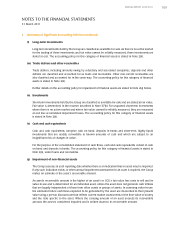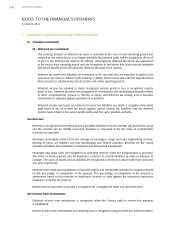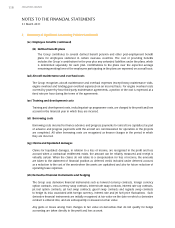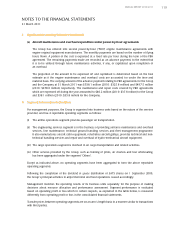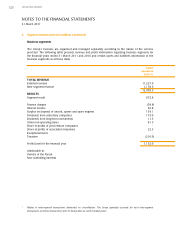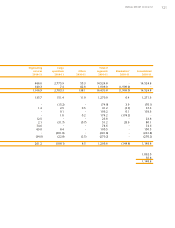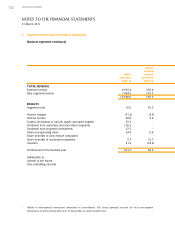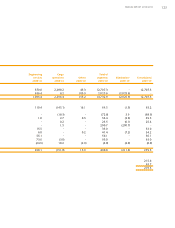Singapore Airlines 2011 Annual Report Download - page 121
Download and view the complete annual report
Please find page 121 of the 2011 Singapore Airlines annual report below. You can navigate through the pages in the report by either clicking on the pages listed below, or by using the keyword search tool below to find specific information within the annual report.ANNUAL REPORT 2010/2011 119
NOTES TO THE FINANCIAL STATEMENTS
31 March 2011
3 Significant Accounting Estimates (continued)
(e) Aircraft maintenance and overhaul expenditure under power-by-hour agreements
The Group has entered into several power-by-hour (“PBH”) engine maintenance agreements with
engine original equipment manufacturers. The monthly payments are based on the number of flying
hours flown. A portion of the cost is expensed at a fixed rate per hour during the term of the PBH
agreement. The remaining payments made are recorded as an advance payment, to the extent that
it is to be utilised through future maintenance activities, if any, or capitalised upon completion of
an overhaul.
The proportion of the amount to be expensed off and capitalised is determined based on the best
estimate as if the engine maintenance and overhaul costs are accounted for under the time and
material basis. The carrying amount of the advance payment relating to PBH agreements for the Group
and the Company at 31 March 2011 was $538.1 million (2010: $325.8 million) and $497.5 million
(2010: $278.0 million) respectively. The maintenance and repair costs covered by PBH agreements
which are expensed off during the year amounted to $40.2 million (2010: $37.8 milion) for the Group
and $38.1 million (2010: $35.8 milion) for the Company.
4 Segment Information (in $ million)
For management purposes, the Group is organised into business units based on the nature of the services
provided, and has 4 reportable operating segments as follows:
(i) The airline operations segment provides passenger air transportation.
(ii) The engineering services segment is in the business of providing airframe maintenance and overhaul
services, line maintenance, technical ground handling services and fleet management programme.
It also manufactures aircraft cabin equipment, refurbishes aircraft galleys, provides technical and non-
technical handling services and repair and overhaul of hydro-mechanical aircraft equipment.
(iii) The cargo operations segment is involved in air cargo transportation and related activities.
(iv) Other services provided by the Group, such as training of pilots, air charters and tour wholesaling,
has been aggregated under the segment “Others”.
Except as indicated above, no operating segments have been aggregated to form the above reportable
operating segments.
Following the completion of the dividend in specie distribution of SATS shares on 1 September 2009,
the Group’s principal activities in airport terminal and food operations ceased accordingly.
Management monitors the operating results of its business units separately for the purpose of making
decisions about resource allocation and performance assessment. Segment performance is evaluated
based on operating profit or loss which in certain respects, as explained in the table below, is measured
differently from operating profit or loss in the consolidated financial statements.
Transfer prices between operating segments are on an arm’s length basis in a manner similar to transactions
with third parties.


